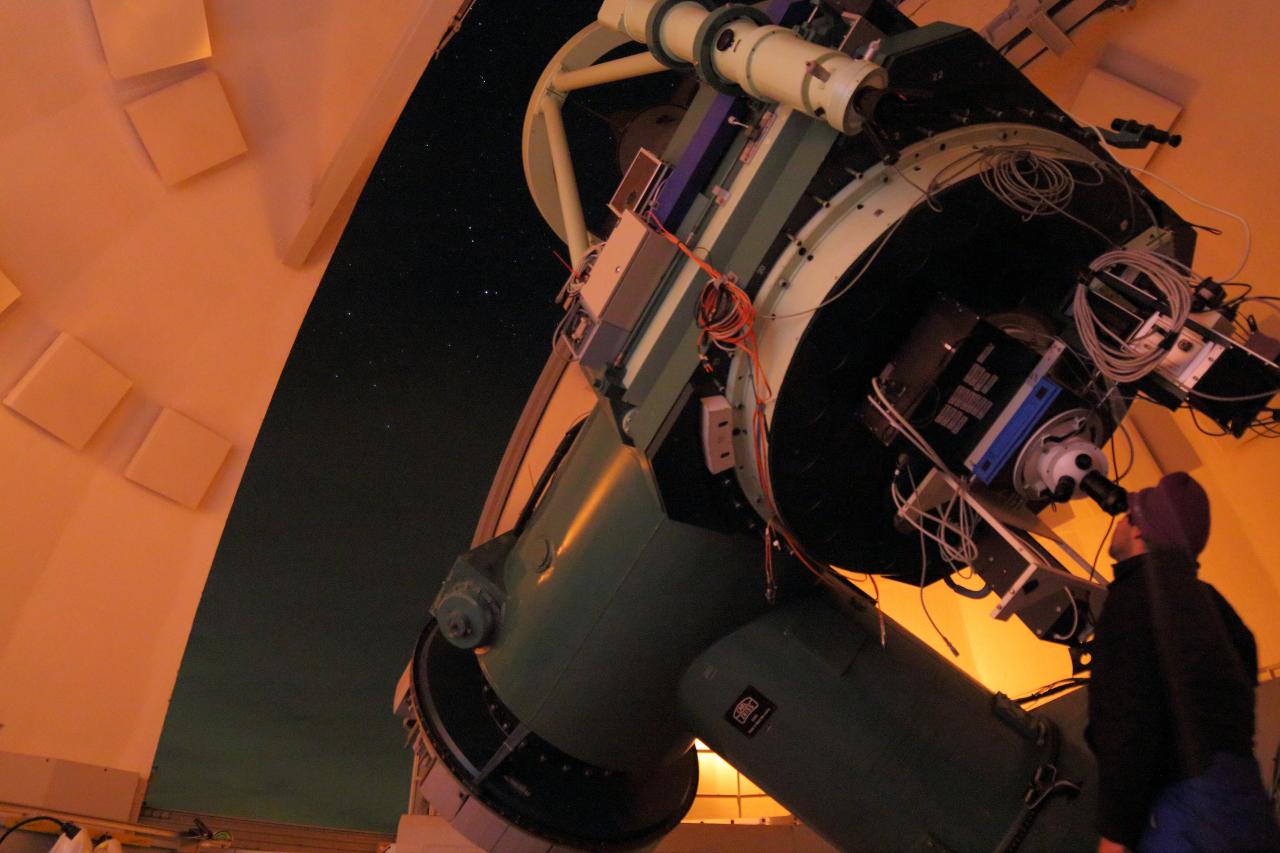The Calar Alto Observatory opens up its doors to the public
The Spanish-German Astronomical Centre at Calar Alto (CAHA, MPG / CSIC) and the company Azimuth-Education and scientific tourism, have signed an agreement for the management and development of astrotourism and outreach activities from the observatory and its environment
The Calar Alto Observatory, the largest astronomical complex in continental Europe, has signed an agreement with the company Azimuth to develop a program that will allow citizens to visit the observatory and access facilities and instruments that until now have only been available to professionals. Activities will begin this March and will be open for booking, either individually or in groups through the web http://www.azimuthspain.com or by emailing to visits@caha.es.
"It has been quite a long time since we thought of setting this initiative in motion from Calar Alto. As scientists we have an obligation to spread our knowledge, and that includes in our case, showing the facilities where we work. This surely will not leave indifferent to any visitor-points out Jesus Aceituno, deputy head of the Observatory-, it is important for society to know that Spain is world leader in astrophysics research and that Calar Alto has been, is and will be an indisputable leader in this area".
The project will be managed by the company Azimuth, formed by professionals of astronomy with an extensive experience in outreach, education and scientific training. Thus, visitors will have the opportunity not only to tour the observatory and its facilities getting to know the science carried out there, but will be in direct contact with the night sky and the universe around us. "Let's change the way the general public see the universe," said Victor Manuel Muñoz, doctor in astrophysics and Azimuth team member.
The jewel of the crown of the activities delivered from Calar Alto will make use of the Observatory’s 1.23 meters telescope, becoming the largest research telescope in Europe to be used for tourism purposes in order to visually observe the wonders of the night sky. The agreement guarantees a minimum of twenty four nights per year for this program, which may be extended depending on demand.
"This is the first time that an astronomical research center outsources the use of instruments making them available to an astrotourism project" says Marcos Villaverde (Azimuth). In addition facilities include the use of accommodation at the observatory so visitors can enjoy being astronomers for one night.

Eastern Andalusia has a rich natural environment with some of the darkest night skies of Europe and the location of the observatory in the Sierra de los Filabres enjoys both these elements. In fact, the Andalusian sky protection law preserves the precious heritage of Calar Alto night sky against the effects of light pollution, which prevents its contemplation from an ever growing portion of territory. "The combination of the environmental wealth of Almería together with this unique astrotourism offer has the potential to become a benchmark of scientific tourism internationally," concludes Javier Sanchez (Azimuth).
The German-Spanish Calar Alto Observatory is located at Sierra de los Filabres, north of Almería (Andalucía, Spain). It is jointly operated by the Instituto Max Planck de Astronomía in Heidelberg, Germany, and the Instituto de Astrofísica de Andalucía (CSIC) in Granada, Spain. Calar Alto has three telescopes with apertures of 1.23m, 2.2m and 3.5m. A 1.5m aperture telescope, also located at the mountain, is operated under control of the Observatorio de Madrid.
Calar Alto Observatory: http://www.caha.es
Azimuth: http://www.azimuthspain.com
Reservations: visitas@caha.es
Instituto de Astrofísica de Andalucía (IAA-CSIC)
Unidad de Divulgación y Comunicación
Silbia López de Lacalle - sll[arroba]iaa.es - 958230532
http://www.iaa.es
http://divulgacion.iaa.es

